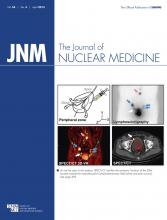REPLY: We appreciate the interest of Schwartz and colleagues in our recent article on myocardial perfusion imaging with cadmium-zinc-telluride (CZT) γ-cameras (1). After several years of experience with a CZT camera with pinhole collimation (Alcyone; GE Healthcare), we reported on the challenges of scanning superobese patients. Schwartz and colleagues comment on the high level of nondiagnostic image quality in our study and concur with our main message as they state that superobese patients represent a population “whose diagnostic accuracy by SPECT is widely recognized to be highly problematic.” From their letter it appears that, using a CZT camera (D-SPECT) from another vendor (Spectrum Dynamics), they have observed lower levels of nondiagnostic image quality than in our report and quite appropriately they list several potential explanations. Among them, Schwartz and colleagues particularly point out the camera design with pinhole collimation geometry and a smaller field of the camera used in our study and question whether our team has considered these limitations. We appreciate the opportunity to bring to the readers’ attention that this is perfectly in line with the main statement of our conclusions of the article, that “design of CZT cameras, with pinhole collimation geometry and a smaller field of view, is more prone to artifacts in very obese patients.” Thus, we fully concur that this may—at least in part—explain the differences observed by Schwartz and colleagues. However, we cannot fully comment on other aspects without knowing any details on the unpublished 8-wk experience of the Rochester team.
Footnotes
Published online Jan. 24, 2013.
- © 2013 by the Society of Nuclear Medicine and Molecular Imaging, Inc.
REFERENCE
- 1.↵







